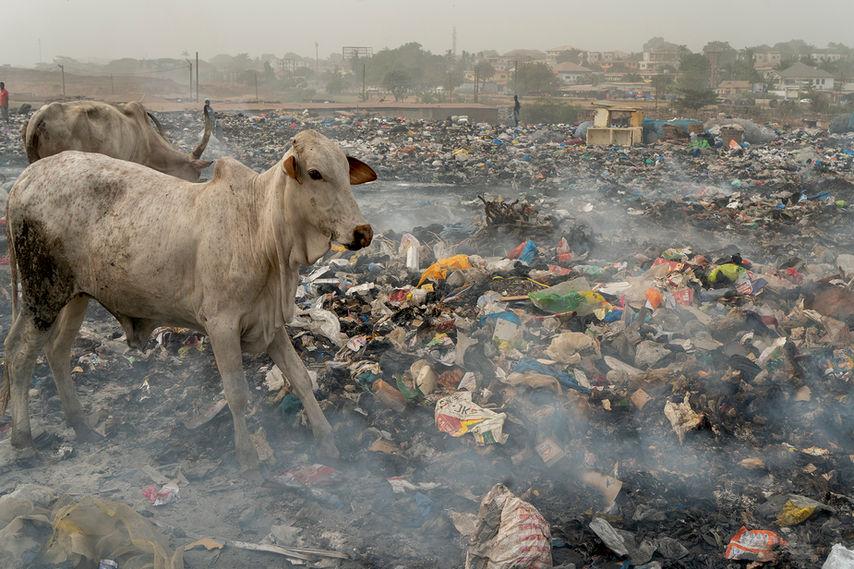
Agbogbloshie 375
Accra, Ghana, 2020

Statement
Agbogbloshie 375
At the end of February 2020, I returned from Accra, the capital of Ghana, where I had been photographing the Agbogbloshie Scrapyard. The project forms part of a multi-city series on the excessive accumulation of waste. Agbogbloshie 375, the series of photographs of which I am presenting a synthesis here, contains in its title a catastrophic figure: the index of air pollution recorded on the first day of my visit, a figure that far exceeds the index that human beings can tolerate.
Waste allows us an axial view of contemporary societies. This documentation, carried out in a space usually inaccessible to foreigners, is much more than an immersion into the continent where humanity came from: it is a revelation of the state of alarm of world. The critical situation in Agbogbloshie has been debated in several media and international studies. But far from improving, this issue seems to be increasing, revealing higher volumes of waste everywhere while burning and contamination continues, beyond the optimistic phrases of the Minister of Environment, who assured in May of 2019 that “Agbogbloshie is changing”. The situation is further complicated, as the burning represents a considerable income source for the inhabitants of the area.
In 2018, I portrayed with a large format (4x5) camera the mountains of scrap metal accumulated in recycling facilities in Miami. The result of this work was exhibited at The Kendall Art Center Miami. I went to Accra with the intention of pursuing this line of work based on landscape as a genre, but the dramatic social and environmental conditions that I found surpassed all the information and images that I had previously consulted. So, I temporarily gave up an aesthetic vision of the topic, and instead developed a social documentation through photojournalism, incorporating neglected angles, such as the presence of women in that area where environmental filth coexists with human warmth.
Agbogbloshie is a commercial district near the center of Accra, the capital of Ghana. According to various sources, this area is inhabited by approximately 40,000 people, most of whom are immigrants from rural areas who move to the capital hoping to find better job opportunities. Within this enclave, right behind the Onion Market and other very popular markets in Accra, is located a large scrapyard and a recycling center for electronic waste. The precarious living conditions and the insalubrity of the area fuse with the high levels of toxicity dwelling in the atmosphere, produced by the daily burning of electronic waste as part of the recycling process.
Very close to where the burning occurs, there is the community of Old Fadama, popularly known as “Sodom and Gomorra”, as well as several lands populated with livestock. In these spaces, trash and discarded plastic cover the hills and plains like a compact mantle. Similarly, garbage dumped into the Korle Lagoon flows with the river stream eventually flowing later into the ocean, just a few kilometers from a fishing community in the neighborhood of Jamestown.
Agbogbloshie 375 documents this critical juncture in human, social and environmental terms.
Willy Castellanos
















































